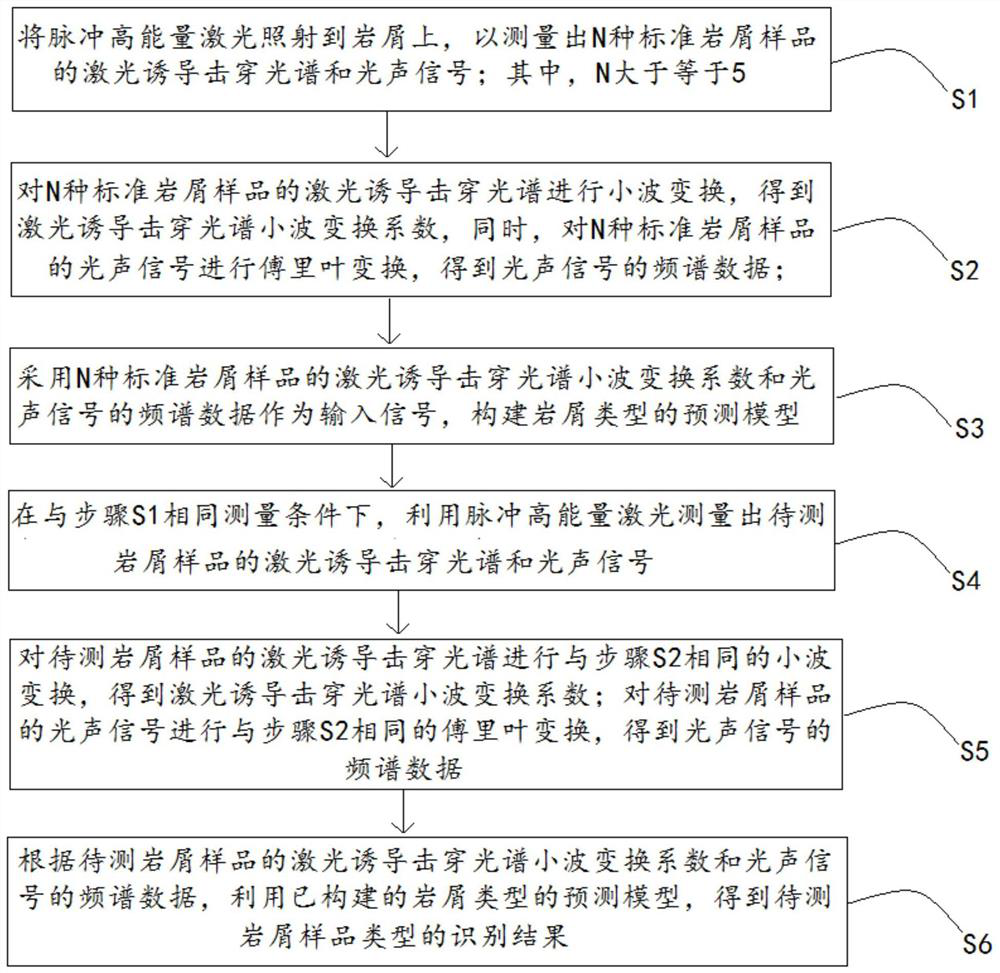Rock debris type identification method and system, storage medium and equipment
A technology of type identification and cuttings, applied in measurement devices, instruments, material analysis by optical means, etc., can solve the problems of large background noise, poor identification effect, and unsatisfactory, and achieve good test reproducibility, Fast, low-cost effects
- Summary
- Abstract
- Description
- Claims
- Application Information
AI Technical Summary
Problems solved by technology
Method used
Image
Examples
Embodiment 1
[0036] This embodiment provides a cuttings type identification method, see figure 1 , the method of this embodiment includes the following steps:
[0037] S1. Irradiate the pulsed high-energy laser on the cuttings to measure the laser-induced breakdown spectra and photoacoustic signals of N standard cuttings samples;
[0038] In the embodiment of this application, the types of standard cuttings samples cannot be too small, that is, the number N of standard cuttings samples cannot be less than 5;
[0039] The larger the N value, the more types of cuttings can be identified, and the better the identification effect.
[0040] The pulsed high-energy laser is a nanosecond laser, a picosecond laser or a femtosecond laser, and its laser energy causes the sample to generate plasma, thereby emitting an atomic or ion spectrum.
[0041] S2. Perform wavelet transform on the laser-induced breakdown spectra of N standard cuttings samples to obtain wavelet transform coefficients of laser-i...
Embodiment 2
[0051] Based on the same inventive concept as in Embodiment 1, this embodiment provides a cuttings type identification system, see figure 2 , the system includes a measurement module, a processing module, a model building module, and an identification module;
[0052] The measurement module uses pulsed high-energy lasers to measure the laser-induced breakdown spectra and photoacoustic signals of N standard cuttings samples;
[0053] The processing module performs wavelet transform processing and Fourier transform processing on the laser-induced breakdown spectra and photoacoustic signals of N kinds of standard cuttings and cuttings to be tested, respectively, so as to obtain laser spectra of N kinds of standard cuttings and cuttings to be tested Induced breakdown spectral wavelet transform coefficients, spectral data of photoacoustic signals.
[0054] The model building module uses the laser-induced breakdown spectrum wavelet transform coefficients of N standard cuttings sampl...
PUM
 Login to View More
Login to View More Abstract
Description
Claims
Application Information
 Login to View More
Login to View More - R&D
- Intellectual Property
- Life Sciences
- Materials
- Tech Scout
- Unparalleled Data Quality
- Higher Quality Content
- 60% Fewer Hallucinations
Browse by: Latest US Patents, China's latest patents, Technical Efficacy Thesaurus, Application Domain, Technology Topic, Popular Technical Reports.
© 2025 PatSnap. All rights reserved.Legal|Privacy policy|Modern Slavery Act Transparency Statement|Sitemap|About US| Contact US: help@patsnap.com


